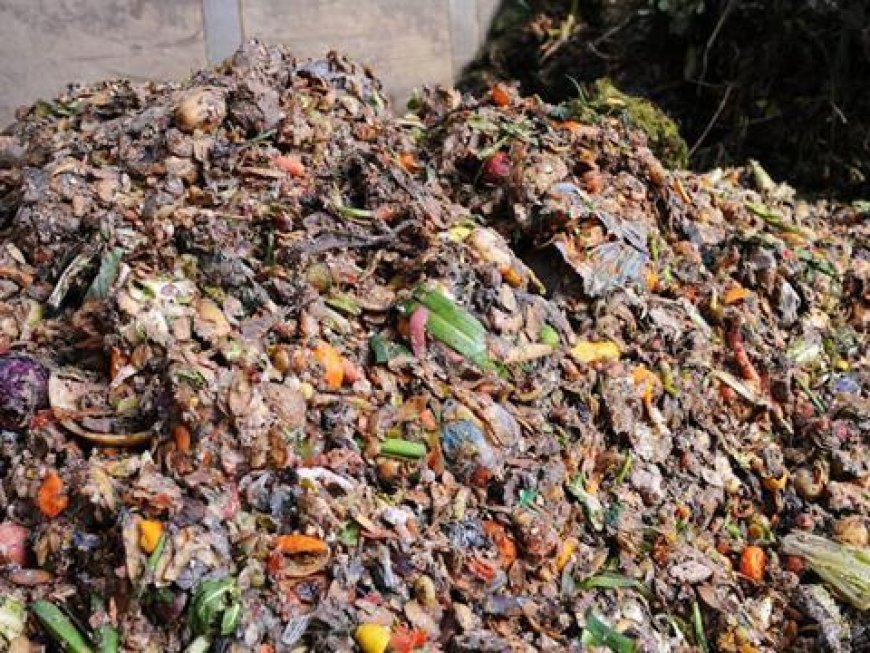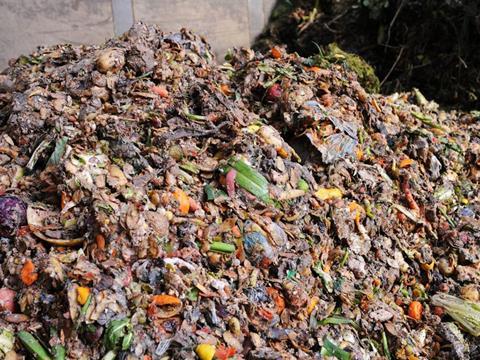Leading food companies sent 1.3 million tonnes of food to landfill and anaerobic digestion
Leading food companies sent 1.3 million tonnes of food to landfill ... The Grocer

Food Companies Send Significant Amounts of Food Waste to Landfill and Anaerobic Digestion

According to a new report, leading food companies sent 600,000 tonnes of food waste to landfill and an additional 720,000 tonnes to anaerobic digestion. These figures were provided by 16 major companies as part of the Consumer Goods Forum’s Food Waste Coalition of Action.
Increasing Transparency and Setting a Baseline
The Consumer Goods Forum’s Food Waste Coalition of Action released these anonymised figures in order to establish a baseline and enhance transparency in the fight against food waste.
It should be noted that only 16 out of the 21 companies in the group provided figures, and out of those 16, only 10 provided enough data to determine the amount of food sold and wasted. Therefore, caution should be exercised when interpreting these figures, as stated by Wrap, the organization responsible for compiling the data.
Extent of Food Waste
According to the latest figures, the companies in the CGF group were responsible for a total of 2.12 million tonnes of food waste. Retailers accounted for nearly 929,000 tonnes, while manufacturers contributed 1.19 million tonnes.
Companies Involved
The companies participating in the Consumer Goods Forum’s Food Waste Coalition of Action include Tesco, McCain Foods, Walmart, Unilever, Kraft Heinz, and Sainsbury’s.
Challenges and Legal Battle
This report comes at a time when the UK government is facing a legal challenge over its decision to backtrack on mandatory food waste reporting for major food companies. The Department for Environment, Food and Rural Affairs (Defra) is currently undergoing judicial review proceedings, with concerns raised about potential increases in food prices due to additional regulatory burdens.
Commitment to Transparency and Progress
Tesco’s Group Chief Executive, Ken Murphy, expressed support for the report’s findings and emphasized the company’s commitment to transparency. He called for continued progress towards the 2030 goal and encouraged other companies to join the journey.
The President and CEO of McCain Foods, Max Koeune, highlighted the significance of having a baseline to measure progress on food loss and waste. He emphasized the need for collective action and a clear pathway forward.
Importance of Sustainable Development Goals (SDGs)
Sharon Bligh, Director of Health and Sustainability at the Consumer Goods Forum, emphasized the impact of addressing food loss and waste on reducing hunger and mitigating climate change. Public reporting on food loss and waste is seen as a catalyst for effective action. The baseline report serves as a starting point for the coalition’s 2030 roadmap in order to fully understand the challenges and opportunities in ending food waste.
Call for Greater Transparency and Mandatory Reporting
Martin Bowman, Senior Policy Manager at Feedback, criticized the limited transparency of companies providing anonymised data through Wrap. He called on the food industry to follow Tesco’s lead and support mandatory food waste reporting. Bowman also expressed disappointment with the slow progress made by the Consumer Goods Forum in terms of transparency, as the forum had initially promised collective action to tackle food waste back in 2015.
SDGs, Targets, and Indicators
1. Which SDGs are addressed or connected to the issues highlighted in the article?
- SDG 12: Responsible Consumption and Production
- SDG 2: Zero Hunger
- SDG 13: Climate Action
The article discusses food waste and its impact on the environment, hunger, and climate change. These issues are directly connected to SDG 12, which focuses on responsible consumption and production. Additionally, reducing food waste is crucial for achieving SDG 2, which aims to eliminate hunger and ensure food security. The article also mentions the effects of food waste on climate change, aligning with SDG 13’s goal of taking urgent action to combat climate change and its impacts.
2. What specific targets under those SDGs can be identified based on the article’s content?
- Target 12.3: By 2030, halve per capita global food waste at the retail and consumer levels and reduce food losses along production and supply chains, including post-harvest losses.
- Target 2.1: By 2030, end hunger and ensure access by all people, in particular, the poor and people in vulnerable situations, including infants, to safe, nutritious, and sufficient food all year round.
- Target 13.3: Improve education, awareness-raising, and human and institutional capacity on climate change mitigation, adaptation, impact reduction, and early warning.
The article highlights the need to reduce food waste in order to achieve Target 12.3 of SDG 12. It also emphasizes the importance of addressing food waste to ensure access to sufficient food for all, aligning with Target 2.1 of SDG 2. Additionally, the article mentions the impact of food waste on climate change, indicating the relevance of Target 13.3 of SDG 13.
3. Are there any indicators mentioned or implied in the article that can be used to measure progress towards the identified targets?
- Amount of food waste sent to landfill
- Amount of food waste sent to anaerobic digestion
- Amount of food waste sold and wasted
- Total amount of food waste generated by companies
- Amount of waste from retailers
- Amount of waste from manufacturers
The article mentions several indicators that can be used to measure progress towards the identified targets. These indicators include the amount of food waste sent to landfill and anaerobic digestion, the amount of food waste sold and wasted, and the total amount of food waste generated by companies. Additionally, the article provides specific figures for the amount of waste from retailers and manufacturers, which can also serve as indicators.
4. SDGs, Targets, and Indicators
| SDGs | Targets | Indicators |
|---|---|---|
| SDG 12: Responsible Consumption and Production | Target 12.3: By 2030, halve per capita global food waste at the retail and consumer levels and reduce food losses along production and supply chains, including post-harvest losses. | – Amount of food waste sent to landfill – Amount of food waste sent to anaerobic digestion – Amount of food waste sold and wasted – Total amount of food waste generated by companies – Amount of waste from retailers – Amount of waste from manufacturers |
| SDG 2: Zero Hunger | Target 2.1: By 2030, end hunger and ensure access by all people, in particular, the poor and people in vulnerable situations, including infants, to safe, nutritious, and sufficient food all year round. | – Amount of food waste sold and wasted |
| SDG 13: Climate Action | Target 13.3: Improve education, awareness-raising, and human and institutional capacity on climate change mitigation, adaptation, impact reduction, and early warning. | – Amount of food waste sent to landfill – Amount of food waste sent to anaerobic digestion |
Behold! This splendid article springs forth from the wellspring of knowledge, shaped by a wondrous proprietary AI technology that delved into a vast ocean of data, illuminating the path towards the Sustainable Development Goals. Remember that all rights are reserved by SDG Investors LLC, empowering us to champion progress together.
Source: thegrocer.co.uk

Join us, as fellow seekers of change, on a transformative journey at https://sdgtalks.ai/welcome, where you can become a member and actively contribute to shaping a brighter future.







